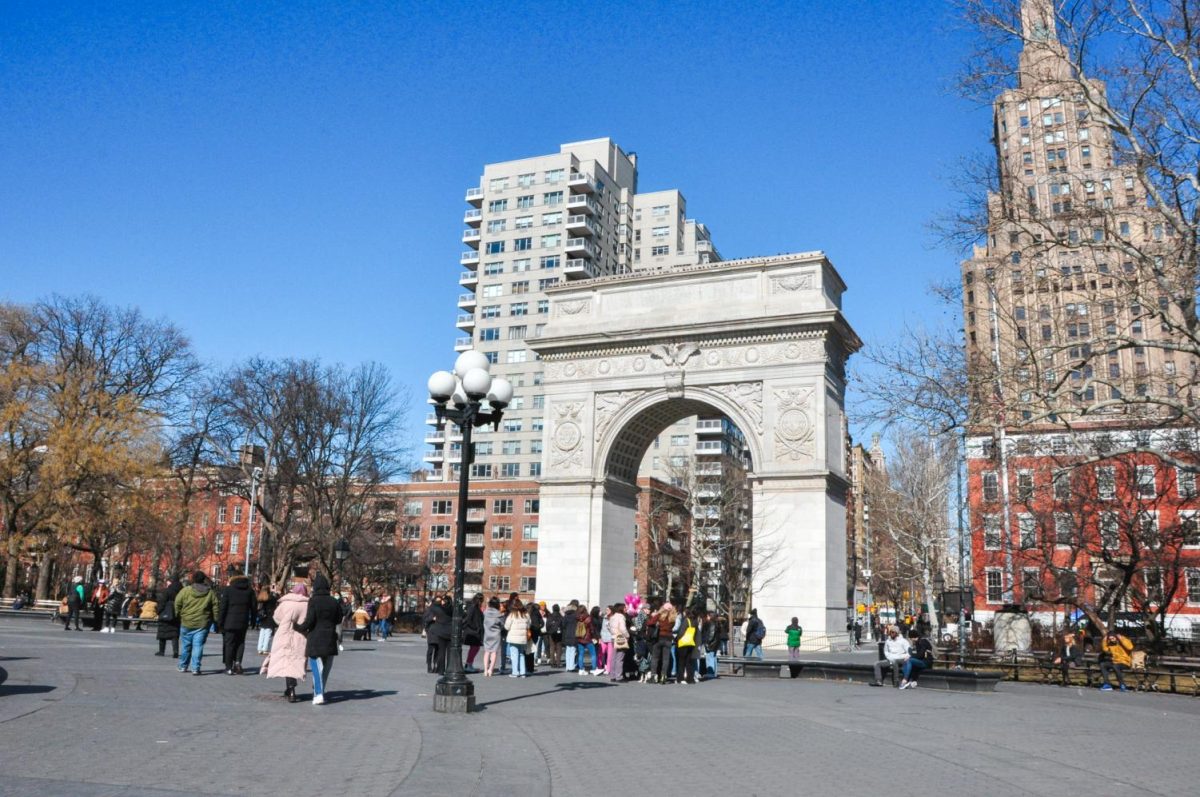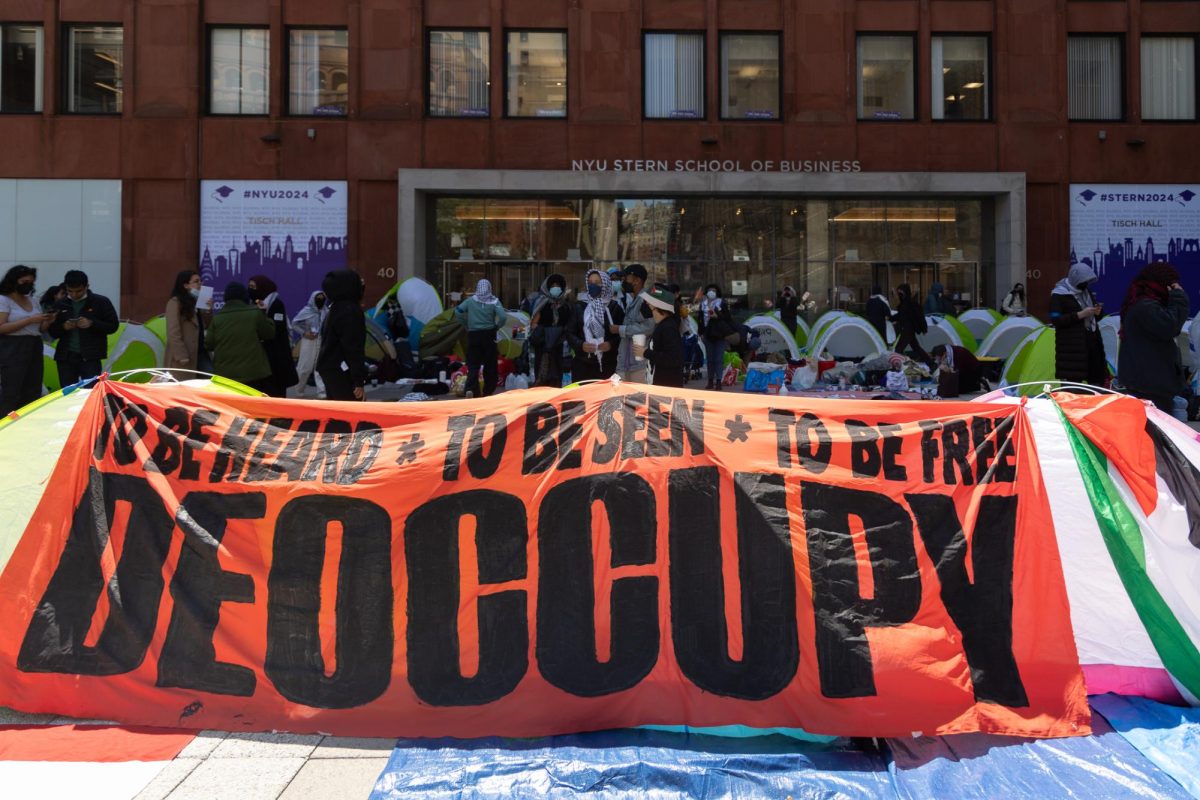Last week, we were witnesses to two Manhattans. While NYU students were, for the most part, caught living in the lower half, they had been making trek upon trek up to that other half — a promised land above 39th Street. Midtown has never been an oasis, but when a warm meal or a charged cell phone is all that is in mind, it naturally became one.
Amid the devastation caused by Hurricane Sandy, an event unprecedented for our city, NYU did a rather commendable job ensuring student safety and facilitating services to those who remained downtown. Proper precautions were adequately met to ensure the well-being of those in housing or in the Village, despite the logistical nightmare that comes with providing food and shelter for thousands of displaced and disgruntled college students. The Kimmel Center for University Life’s transformation from student center to refugee shelter was met with relief from those stuck there. It was a place to recharge, literally and figuratively, for a fatigued student body. It was not ideal. But it was there, and that is what we needed. Meanwhile, an overworked dining staff and NYU personnel deserve nothing but praise for their efficient and unceasing care for those they served, despite also being personally affected and just as displaced.
The university did a stellar job keeping the masses abreast of what was going on and what steps were to be taken next. In the immediate wake, constant information updates from resident assistants and NYU administrators were a welcome sight to email inboxes, that is, when email was accessible. Many students were unable to connect to Wi-Fi as most buildings were completely without it. However, email still seemed to be the best option available, given the cell tower shortages, particularly from AT&T, which could not provide service for the surrounding blocks around NYU campus sites. It made consistent text or phone updates untenable. Regardless, NYU officials did their due diligence in keeping the affected community in the loop.
Perhaps the worst disaster that struck the NYU community on the night of the hurricane was the evacuation of the NYU Langone Medical Center when their backup generator failed. But through the heroic work of emergency health care staff, patients were safely and quickly evacuated to area hospitals that greeted the newcomers with open arms. Newborns on respirators were pumped air manually as they were carried down stairs, and thanks to thorough training, the transportation went relatively smoothly. Even still, millions of dollars in equipment and years of medical research — including thousands of laboratory mice and tissue samples — were destroyed. Steps need to be taken in the future to ensure that this cannot happen again. Whether the generators were outdated, as hospital trustee Gary Cohn alleges, or in full compliance with federal and state standards, as the hospital maintains, modernization of essential equipment must be completed to provide future insurance of necessary power.
Although NYU deserves loads of credit for their handling of this situation, it would have been comforting, nonetheless, to have known the evacuation plans beforehand when the scope of the hurricane’s potential wrath was known. The process could have been expedited, and everyone would have been better prepared had the plan been
previously relayed to students. It stands as a suggestion should something like this happen again — an occurrence that weather experts say is likely soon enough.
Hurricanes happen every year, almost always leaving devastation behind. While we focus on cleanup and recovery, it is fairly easy to accept Hurricane Sandy as something that just happened, as something in the past, as something that nature caused that was beyond our control. But it wasn’t. We cannot simplify a problem with such complex solutions, and NYU will have to brace itself for similar events.
Scientific experts agree that climate change is not the sole cause of any one freak weather event. However, they also agree that it was certainly a factor in making Sandy as strong and harmful as it was. Ultimately, it is an event that can, and will, occur more frequently. Earlier this year, two scientists linked the melting of polar ice caps to the atmospheric weather patterns that caused Sandy to be so severe. In the last 15 years, weather events costing more than $1 billion in damage doubled. Sandy may have cost up to $50 billion, though it is too early to tell.
Although Mayor Bloomberg seemed to handle this high-pressure situation quite well, providing detailed reports and press conference after press conference, his decision to use the publicity as a springboard for endorsing President Obama for a second term seemed ill-timed. Citing Obama’s position on climate change and the environment as key factors, Bloomberg did remind us, however, of the role politics plays in this mess.
It is noteworthy to remind the community that, for the first time in almost 30 years, climate change bore no mention during the presidential debates and barely gets brought up on either of the two major party’s campaign trails. Despite Mitt Romney’s irresponsible denial of man-made climate change, Obama’s consistent inaction on the increasingly imperious issue manifests itself as an equally irresponsible consequence. Despite what Bloomberg says, the environment has no Loraxian advocate this time around.
Earlier in the semester, this Editorial Board wrote that sometimes it is necessary to politicize disasters in order to see real change as a result of the tragedies. This is exactly the type of scenario we were talking about. While our efforts must go first and foremost into short-term recovery, we must remember that we can help to prevent another tragic event like Sandy by actively working with the betterment of the environment in mind and making our personal practices more sustainable. If we do not, we may be spending more hurricane seasons from here on out sleeping on the floor
of Kimmel.
As students re-adjust to a structured routine and as local businesses bounce back from their unexpected standstill, the NYU community should be proud of a response rooted in selflessness, even through the overwhelming sense of despair. We must not forget, though, that there is still work to be done in the outer boroughs and along the coast, particularly in New Jersey.
While New York remains in gridlock, normalcy should return to the city soon enough. The light at the end of the tunnel is now tangible since Consolidated Edison restored electricity and power to lower Manhattan. Subways are running, properties are being rebuilt. We can take collective solace in how we were able to provide for one
another despite incredibly extenuating circumstances. We came together because, after all, that is the New York state of mind.
A version of this article appeared in the Monday, Nov. 5 print edition. Email the WSN Editorial Board at [email protected].









































































































































